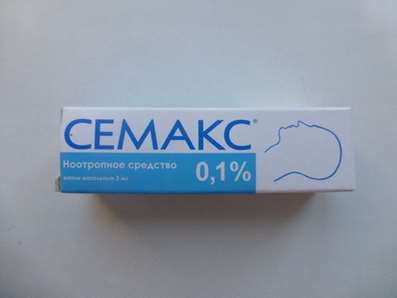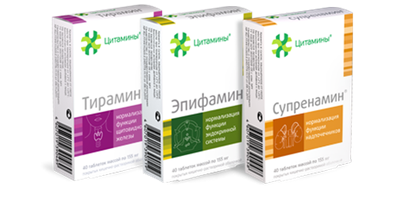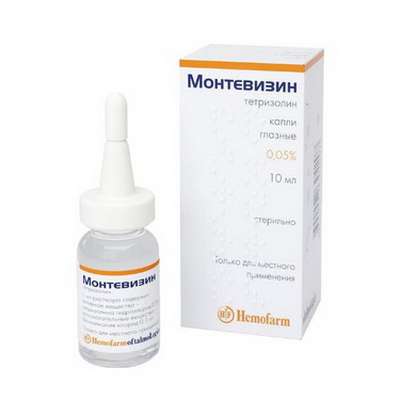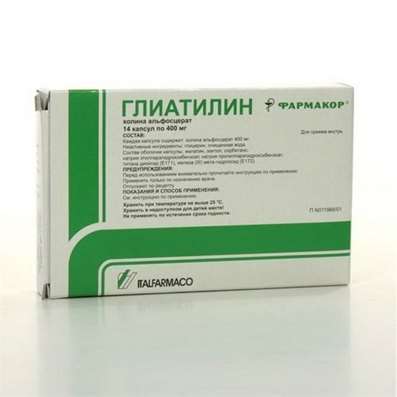Instruction for use: Antigrippin Pharmaceutical
I want this, give me price
ņ“’ R05X Other remedies for catarrhal diseases
Pharmacological group
Remedy for symptoms of ARI and "colds" [Other non-narcotic analgesics, including non-steroidal and other anti-inflammatory drugs]
Remedy for symptoms of ARI and "colds" [Other non-narcotic analgesics, including non-steroidal and other anti-inflammatory drugs, in combinations]
Nosological classification (ICD-10)
J00 Acute nasopharyngitis [runny nose]
Viral rhinitis, Inflammation of the nasopharynx, Inflammatory diseases of the nose, purulent rhinitis, Nasal congestion, Nasal congestion with colds and flu, The difficulty of nasal breathing, The difficulty of nasal breathing for colds, Difficulty in nasal breathing, Difficulty in nasal breathing in colds, nasal, hypersecretion, cold, ARI with rhinitis phenomena, coryza, Acute rhinitis of various origins, Acute rhinitis with thick purulent mucous exudate, Acute nasopharyngitis, Swelling of the mucosa of the nasopharynx, Rhinitis, rhinorrhea, Infectious-inflammatory diseases of ENT organs, heavy cold, rhinopharyngitis, nasopharyngitis
J06 Acute upper respiratory infections of multiple and unspecified
Frequent colds viral diseases, Infections of the upper respiratory tract, Acute respiratory disease influenza character, for colds Pain, Acute colds,Cold, respiratory infection,Seasonal colds, Pain in infectious and inflammatory diseases of the upper respiratory tract, Bacterial infections of the upper respiratory tract, Bacterial respiratory infections, Viral disease of the respiratory tract, Viral respiratory tract infections, Inflammatory disease of the upper respiratory tract, Inflammation of the upper respiratory tract disease, Inflammation of the upper respiratory tract illness with difficult sputum, Inflammatory airway disease, Secondary infections with colds, Shortness of sputum in acute and chronic respiratory diseases, Upper respiratory tract infection, Infections of the upper respiratory tract, Respiratory Tract Infections, Infections of the respiratory tract and lungs, Infectious-inflammatory diseases of the upper respiratory tract, Infectious-inflammatory diseases of the upper respiratory tract and ENT-organs, Infectious-inflammatory diseases of the upper respiratory tract in children and adults, Infectious-inflammatory diseases of the upper respiratory tract, Infectious inflammation of the airways,respiratory infection, Qatar upper respiratory tract, Catarrh of the upper respiratory tract, Catarrhal disease of the upper respiratory tract, Catarrhal symptoms of the upper respiratory tract, Coughing with a cold, SARS, ARI, ARI with rhinitis phenomena, Acute respiratory infection, Acute infectious and inflammatory disease of the upper respiratory tract, Acute respiratory disease, Sore throat or nose, Respiratory viral infections, Respiratory diseases, Respiratory infections, Recurrent respiratory infections, Secondary infection with influenza, cold in the chest, Feverish condition with flu usitis, acute sinusitis, genyantritis, purulent sinusitis
J11 Influenza, virus not identified
Flu, Influenza in the early stages of the disease, Flu in children, cold in the chest, Begins flu-like condition, Acute disease parainfluenza, parainfluenza, parainfluenza state, influenza epidemics, The pains of the flu, Influenza
R50.0 Fever with chills
High fever, Heat, Chills, elevated temperature, hyperthermia, Prolonged fever, Feverish syndrome, Fervescence, Increased body temperature in infectious and inflammatory diseases, fever Symptoms, febrile syndrome, Febrile state, Fever, Fever in infectious and inflammatory diseases, Fever with SARS, Fever with cold, Fever for colds, febrility, Feverish condition with flu, Feverish state in infectious and inflammatory diseases , Feverish state of infectious diseases and in the postoperative period, Feverish condition for colds, Febrile of different genesis, Feverish syndrome on the background of infectious diseases, Feverish syndrome in infectious and inflammatory diseases, Feverish syndrome with colds, Feverish syndrome of different genesis, Increased temperature for colds, Increased temperature at catarrhal and infectious and inflammatory diseases, Increased body temperature in cold, etc., Increased body temperature in cold and other infectious and inflammatory diseases, Increased body temperature in cold and other infectious and inflammatory diseases, Fever during pregnancy, Fever with thrombocytopenia, Febrile reaction in blood transfusion
R51 Headache
Pain in the head, Cephalgia, Pain with sinusitis, Pain in the back of the head, Painful headache, Headache of vasomotor genesis, Headache of vasomotor origin, Headache with vasomotor disorders, Headache, Neurological headache, Serial headache
Composition
Set of capsules
Capsule A (green) 1 caps.
active ingredients:
ascorbic acid 300 mg
acetylsalicylic acid 250 mg
rutoside trihydrate (in terms of rutoside) 20 mg
auxiliary substances: calcium stearate - 1 mg; potato starch - 9 mg
capsule hard gelatin: gelatin - 90,723 mg; dye azorubin (E122) - 0.003 mg; dye diamond black (E151) - 0.184 mg; dye blue patented (E131) or brilliant blue (E133) - 0.315 mg; dye quinoline yellow (E104) 2.207 mg; titanium dioxide (E171) 2.56 mg
Capsule B (white) 1 caps.
active ingredients:
metamizole sodium monohydrate 250 mg
calcium gluconate monohydrate 100 mg
Diphenhydramine hydrochloride 20 mg
auxiliary substances: calcium stearate - 3.8 mg; potato starch - 6.2 mg
capsule hard gelatin: gelatin - 91,944 mg; titanium dioxide (E171) - 4.055 mg
Description of dosage form
Capsules A: hard gelatinous No. 0 green.
Contents of capsules - a mixture of crystalline and amorphous powder from light yellow to yellow with a greenish tinge, it is allowed to have lumps and single inclusions of a darker color.
Capsules B: hard gelatinous No. 0 in white.
The contents of capsules - a mixture of powder and granules of white or white with a yellowish tint of color, the presence of lumps is allowed.
pharmachologic effect
Pharmacological action - antipyretic, antihistamine, analgesic, anti-catarrhal.
Pharmacodynamics
Combined drug, has antipyretic, anti-inflammatory, analgesic, angioprotective, anticongestive action.
Pharmacological activity of the drug is due to the properties of the active substances that make up its composition.
Acetylsalicylic acid suppresses proinflammatory factors, exudative and proliferative phases of inflammation due to oppression of COX, inhibits synthesis or inactivates mediators of inflammation. It has analgesic, antipyretic and anti-inflammatory action, inhibits platelet aggregation.
Ascorbic acid takes part in many types of oxidation-reduction reactions in the body, inhibits the processes of peroxidation of lipids, proteins and other components of the cell, thus protecting it from damage. Ascorbic acid increases the concentration of interferon in the blood, this is associated with its membrane-stabilizing effect and immunomodulating effect. Ascorbic acid is able to accumulate in leukocytes, increasing their phagocytic activity, which increases antimicrobial and antiviral protection. Activates the biosynthesis of corticoid hormones in the adrenal cortex and thereby stimulates the adaptive processes of the body under stress.
Rutozide is an angioprotective agent. Belongs to a group of bioflavonoids that can be used to build biologically important compounds in a cell, in particular ubiquinone. It is able to reduce capillary bleeding by strengthening the walls of blood vessels, the permeability of which increases during a viral infection. Rutozid favorably affects the maintenance of normal levels of the immune system.
Metamizole sodium - an analgesic non-narcotic agent, a derivative of pyrazolone, non-selectively blocks COX and reduces the formation of PG from arachidonic acid. It prevents painful impulses, raises the threshold of excitability of thalamic centers of pain sensitivity, increases heat transfer. Has analgesic, antipyretic and some spasmolytic (with respect to the smooth muscles of the urinary and biliary tract) action.
Diphenhydramine is a competitive blocker of H1-histamine receptors. It has a pronounced antihistaminic activity (weakens the body's response to endogenous and exogenous histamine). In addition, it has a local anesthetic effect, relaxes smooth muscles as a result of direct spasmolytic action, blocks to a moderate extent the cholinergic receptors of vegetative nervous nodules. Reduces the permeability of capillaries, prevents histamine edema of tissues and histamine hypotension and thereby reduces vascular permeability, eliminates edema and hyperemia of the nasal mucosa, perspiration in the throat, allergic reactions from the upper respiratory tract.
An important feature of diphenhydramine is its sedative effect.
Calcium gluconate is a Ca2 + -containing drug. Calcium ions are necessary for the implementation of the process of transmission of nerve impulses, reduction of skeletal and smooth muscles, the activity of the heart muscle, the formation of bone tissue, and clotting of blood. Calcium ions reduce the permeability of cells and the vascular wall, prevent the development of inflammatory reactions, increase the resistance of the body to infections.
Indications
Symptomatic treatment in adult colds, acute respiratory viral infections and influenza, accompanied by fever, headache, chills, nasal congestion.
Contraindications
hypersensitivity to the components of the drug;
erosive and ulcerative lesions of the gastrointestinal tract (in the phase of exacerbation);
gastrointestinal bleeding;
increased tendency to bleeding;
oppression hemopoiesis (agranulocytosis, neutropenia, leukopenia);
hereditary hemolytic anemia associated with a deficiency of glucose-6-phosphate dehydrogenase;
hemorrhagic diathesis (hemophilia, von Willebrand's disease, telangiectasia, thrombocytopenic purpura);
hypoprothrombinemia;
thrombocytopenia;
deficiency of vitamin K;
bronchial asthma;
diseases accompanied by bronchospasm;
aspirin asthma;
severe dysfunction of the liver or kidney;
hypercalcemia (concentration of calcium ions should not exceed 12 mg% or 6 meq / l);
nephrolithiasis (calcium);
calciuria;
sarcoidosis;
simultaneous reception of cardiac glycosides (risk of arrhythmias);
exfoliating aortic aneurysm;
portal hypertension;
deficiency of glucose-6-phosphate dehydrogenase;
pregnancy;
the period of breastfeeding;
children and adolescence up to 18 years.
With caution: hyperuricemia; urate nephrolithiasis; gout; Stomach ulcer and / or duodenal ulcer (history); decompensated heart failure.
pregnancy and lactation
The use of the drug during pregnancy is contraindicated.
If you need to use the drug during lactation, you should decide whether to stop breastfeeding.
Side effects
Anorexia, nausea, vomiting, gastralgia, diarrhea, erosive-ulcerative lesions of the digestive tract, gastrointestinal bleeding, hepatic and / or renal insufficiency, increased blood pressure, tachycardia. Allergic reactions: skin, rash, Quincke's edema, bronchospasm.
With prolonged admission (more than 7 days) - dizziness, headache, visual impairment, tinnitus, leukopenia, thrombocytopenia, agranulocytosis; with propensity to bronchospasm may provoke an attack; reduction of platelet aggregation, hypocoagulation, hemorrhagic syndrome (epistaxis, bleeding gums, purpura, etc.), renal damage with papillary necrosis; deafness; anaphylactic shock; Stevens-Johnson syndrome, toxic epidermal necrolysis (Lyell's syndrome), Reye's syndrome (hyperpyrexia, metabolic acidosis, disorders of the nervous system and psyche, vomiting, liver dysfunction). Possible kidney damage, oliguria, anuria, proteinuria, interstitial nephritis, urine staining in red due to the release of a metabolite.
About all side effects (unusual), incl. not mentioned above, you should inform your doctor and stop taking the drug.
Interaction
If you need to share with other drugs - consult your doctor first.
Enhances the effect of heparin, oral anticoagulants, reserpine, steroid hormones and hypoglycemic agents.
Reduces the effectiveness of spironolactone, furosemide, antihypertensive drugs, anti-arthritis agents that promote the excretion of uric acid.
Increases the side effects of SCS, sulfonylureas, methotrexate, non-narcotic analgesics and NSAIDs.
Combination of the drug with barbiturates, antiepileptic drugs, zidovudine, rifampicin and alcohol-containing preparations should be avoided (the risk of hepatotoxic effect increases).
Ascorbic acid improves the absorption of iron in the intestine.
Tricyclic antidepressants, oral contraceptives and allopurinol disrupt metamizole metabolism in the liver and increase its toxicity.
Metamizole sodium enhances the effects of alcohol-containing beverages. Radiocontrast agents, colloidal blood substitutes and penicillin should not be used during treatment with metamizole sodium.
The simultaneous use of metamizole sodium with cyclosporine reduces the level of the latter in the blood.
Thiamazole and sarcolysin increase the risk of developing leukopenia.
Sedatives and tranquilizers increase the analgesic effect of metamizole sodium.
Dosing and Administration
Inside, after eating, with water, 2-3 times a day for 3-5 days until the symptoms disappear.
Adults appoint 2 caps. on reception: 1 green capsule (from blister A) and 1 white capsule (from blister B).
If there is no improvement in well-being after a five-day period, the drug should be discontinued and consult a doctor.
Overdose
Symptoms: nausea, vomiting, stomach pain, sweating, pale skin, tachycardia. With light intoxication - ringing in the ears; severe intoxication - drowsiness, collapse, convulsions, bronchospasm, shortness of breath, anuria, bleeding, progressive respiratory paralysis and dissociation of oxidative phosphorylation, causing respiratory acidosis. If you suspect a poisoning, you should immediately seek medical help.
Treatment: induce vomiting, rinse the stomach, take saline laxatives, activated charcoal. In the conditions of the medical institution - carrying out forced diuresis, hemodialysis, with the development of convulsive syndrome - IV injection of diazepam and barbiturates.
special instructions
Since acetylsalicylic acid has an antiaggregatory effect, the patient, if he is to undergo surgery, must warn the doctor in advance about the use of the drug.
Acetylsalicylic acid in low doses reduces the excretion of uric acid. This can in some cases provoke a gout attack.
During treatment, you should stop using alcohol-containing beverages (increased risk of gastrointestinal bleeding).
In connection with the stimulating effect of ascorbic acid on the synthesis of corticosteroid hormones, it is necessary to monitor the function of the kidneys and blood pressure.
Assigning ascorbic acid to patients with rapidly proliferating and intensely metastatic tumors can aggravate the course of the process.
Ascorbic acid, as a reducing agent, can distort the results of various laboratory tests (blood glucose, bilirubin, hepatic transaminase activity, LDH).
In patients suffering from bronchial asthma and pollinosis, the development of hypersensitivity reactions is possible.
Impact on the ability to drive vehicles and other mechanisms that require increased concentration of attention. During the use of the drug, caution should be exercised in managing the transport and in dealing with other potentially hazardous activities requiring increased concentration of attention and speed of psychomotor reactions.
Form of issue
Capsules A. For 10 caps. in the outline cell pack.
Capsules B. For 10 caps. in the outline cell pack.
2 contour squares (one with a capsule of green color, the second with a capsicum of white color) in a pack of cardboard.
Conditions of leave from pharmacies
Without recipe.
storage Conditions
In a dry, the dark place at a temperature of no higher than 25 į C.
Keep out of the reach of children.
Shelf life
2 years.
Do not use after the expiry date printed on the package.

 Cart
Cart





